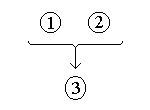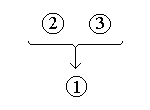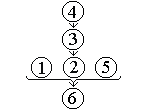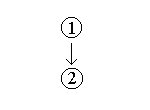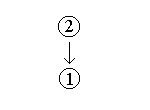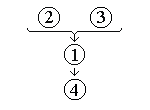|
|
|
||||||||||||||||||||||||||||||||||||||||||||||||||||||||||||||||||||||||||||||||||||||
|
|
|||||||||||||||||||||||||||||||||||||||||||||||||||||||||||||||||||||||||||||||||||||||
|
Homepage > Logic > Tests > The Structure of Arguments Answers |
|||||||||||||||||||||||||||||||||||||||||||||||||||||||||||||||||||||||||||||||||||||||
|
|
|||||||||||||||||||||||||||||||||||||||||||||||||||||||||||||||||||||||||||||||||||||||
|
|
|
Part I. Arguments (30 points). Indicate whether the passages below are arguments or non-arguments. If the passage is an argument, tell whether it is inductive or deductive and diagram it using the numbers provided.. A. [1] Since I studied hard for this logic test, and [2] since I understand the material very well, [3] I will probably make a good grade.
B. [1] There is probably gold in Abbeville County [2] because there are many abandoned gold mines there and [3] Ransom’s geology guide lists sites in this county as places to look for gold.
C. [1] If students were environmentally aware, they would object to the endangering of any species of animal. [2] But the well known Greenwood white squirrel is endangered [3] as it has completely disappeared from the Lander Campus [4] because the construction of the Learning Center and new Science Complex has destroyed its native habitat. [5] Yet, no Lander student objected. [6] Therefore, Lander students are not environmentally aware.
D. [1] In 60 out of 90 attacks in the dark, catfish strike guppies along the guppy's meandering path. [2] Consequently, catfish can track the chemical trails in guppy-wakes in the dark.
E. [1] God is good [2] because by definition God cannot be evil or indifferent.
F. [1] I was late for class [2] because my car ran out of gas and [3] I could not find a gas station.
Part II. Truth, Validity, and Soundness (20 points). Write in the blanks below the word "true" or the word "false" in accordance with the truth or falsity of the statement. 1. ______False_____ All deductive arguments with true premisses are
always valid. 2. ______True______
All sound deductive arguments are valid. 3. ______False_____ All valid arguments have
true premisses and a true conclusion. 4. ______True______ All deductive arguments
with true premisses and a false conclusion are invalid. 5. ______True______ Some invalid arguments
have true premisses and a true conclusion. 6. ______False_____ All valid deductive
arguments are sound. 7. ______False_____ All deductive arguments are valid. 8. ______False_____ All deductive arguments
with a false conclusion are invalid. 9. ______True______ All arguments with a
false statement in them are unsound. 10. _____True______ All sound arguments are
valid and have all true statements in them. Part III. Premiss and Conclusion Indicators (20 points). Place a check mark in the appropriate column for the following words.
Part IV. Short Answer (30 points). Explain the meaning of the following terms and give an example of each. A. statement:
B. sentence which is not a statement:
C. deductive argument:
D. inductive argument:
|
|||||||||||||||||||||||||||||||||||||||||||||||||||||||||||||||||||||||||||||||||||||
|
Send corrections or suggestions to
larchie[at]philosophy.lander.edu |
|||||||||||||||||||||||||||||||||||||||||||||||||||||||||||||||||||||||||||||||||||||||
|
Arguments | Language | Fallacies | Propositions | Translation | Symbolic |
|||||||||||||||||||||||||||||||||||||||||||||||||||||||||||||||||||||||||||||||||||||||
|
|
|
||||||||||||||||||||||||||||||||||||||||||||||||||||||||||||||||||||||||||||||||||||||

